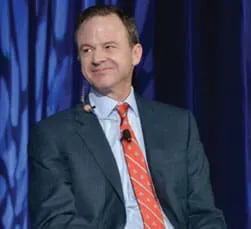Fixing health care: From Greeley to Phoenix, Dr. Robert Groves works to improve patients’ health

Dr. Robert Groves got his first taste of what it was like to be a doctor through his father, who was a general practitioner in Albany, Ga.
The vice president of health management for Banner Health and chief medical officer for the Banner Health Network, who spent much of his career working as a pulmonologist and critical-care physician in Northern Colorado, says he grew up going on house calls and on morning report at the hospital with his father.
Groves’ father was the first doctor in the area to have a mixed waiting room.
“He faced some interesting challenges…
THIS ARTICLE IS FOR SUBSCRIBERS ONLY
Continue reading for less than $3 per week!
Get a month of award-winning local business news, trends and insights
Access award-winning content today!
